Home | Weed Removal Info | Harvesting Photos | Permit Info | Cattail Removal | FAQ's | Contact Us | Links
Lakes Weed Harvesting
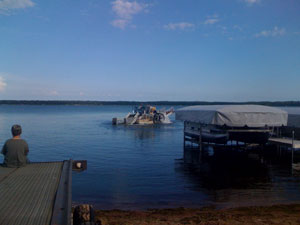 |
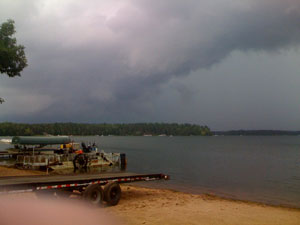 |
Harvesting off shore |
Harvestor & Trailer Beached while storm passes by Lower Hay Lake |
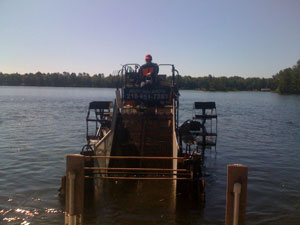 |
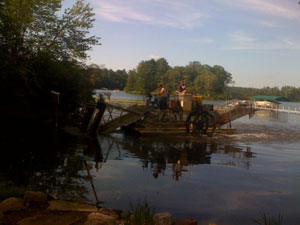 |
Harvesting 5' Deep in front of dock |
Harvesting Lilly Pads 15' Channel |
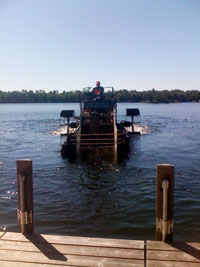 |
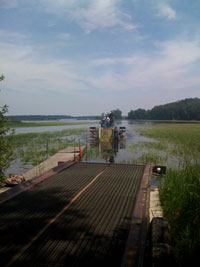 |
Harvestor Dagget Lake |
Cutting Weeds Island Lake |
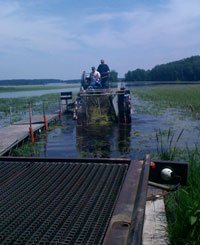 |
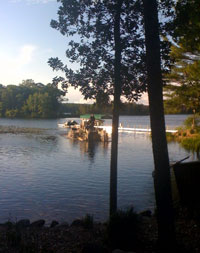 |
Kilwory Bay 15ft channel through |
Island Lake cutting submeraged vegation in back bay |
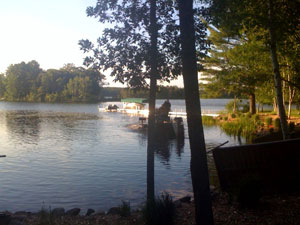 |
 |
Island Lake Whitefish Chain |
Cutting weeds submerged vegatation 25,000 sq. ft. |
We harvest weeds on lakes throughout Minnesota, generally from St. Cloud, Minnesota and on north, and also in neighboring states. Feel free to call us wherever you are in the northern lakes area as we may be able to help you out.
Our process involves not only cleaning the lakes, but afterwards we carefully and thoroughly clean our equipment. Our equipment is power washed for 4-6 hours after leaving the lake. Our machinery cuts 5 feet deep and a 6 foot wide path.
Our company has successfully completed the Minnesota Department of Natural Resources Aquatic Invasive Species Prevention Training.
From the Minnesota DNR: A number of invasive plants and animal species have been severe world-wide agents of habitat alteration and degradation, and competition for native species. They are the major cause of biological diversity loss throughout the world, and are considered "biological pollutants." Their populations can often rapidly increase allowing them to disrupt native plant communities and crowd out native species. By changing habitat, they can also affect species beyond those they may directly displace. They can cause problems for those who use natural resources, whether for recreational use of land or waters or industrial use of public waters. Once established, invasive species rarely can be eliminated. There are many pathways of introduction that move species from their natural range to new, distant places. Most introductions are the result of human activities. Some introductions, such as common carp, buckthorn, and purple loosestrife, were intentional and have caused unexpected damage. Many exotic introductions are unintentional. Species are carried on barges, boats and trailers, animals, vehicles, commercial goods, packing materials, produce, footwear or clothing, and in ballast water of ships. Ships take on ballast water in other countries for stability during the ocean crossing. This water is pumped out when the ships pick up their loads in Great Lakes ports. Many of the species, such as zebra mussel, ruffe, and spiny water flea arrived in the Great Lakes this way. But they are now being spread throughout the continent's interior in and on boats and through other recreational activities. Prohibited invasive species Certain invasive species that can threaten natural resources and their use have been designated as prohibited invasive species in Minnesota. It is unlawful (a misdemeanor) to possess, import, purchase, transport, or introduce these species except under a permit for disposal, control, research, or education. The prohibited invasive species in Minnesota include the following and any hybrids, cultivars, or varieties of the species listed below: * Aquatic Plants
|
Home | Weed Removal Info | Harvesting Photos | Permit Info | Cattail Removal | FAQ's | Contact Us | Links

